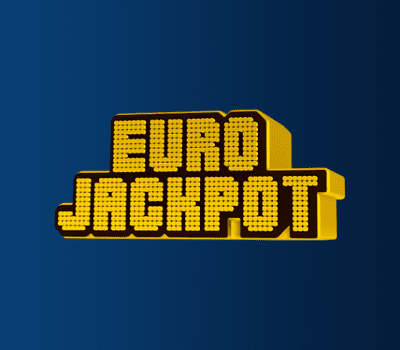Derbies. As soon as the new competition program is published, fans circle with a red marker the date on which his or her club meets its arch rival in a match that is about more than just winning. Derbies often have much deeper stories attached to them than the stories that took place on the football field. The coming period will dive Football zone weekly in various football derbies and the background to this.
At least twice a season, the picturesque Asturias turns into a fiery battleground when the clubs Sporting de Gijón and Real Oviedo compete. The Asturias derby is again on the program on Saturday evening. Football zone will participate in various derbies in and outside Europe in the coming period. With part 1 El Derbi Asturiano.
Origin
To properly examine the heated derby, it is important to go back to the origins of the rivalry between Asturias' two largest cities. Asturias is located in the north of Spain on the Bay of Biscay. Asturias is a peculiar autonomous community in itself as it is the only remaining Principality of Spain. Also speak a lot Asturios, as the people from Asturias call themselves, their own language. The Asturios have a strong affinity with Christianity, because during the Moorish rule on the Iberian Peninsula, only Asturias was still Christian.
Until the 1960s, Asturias was one of the poorer areas of the country and its economy was mainly derived from mining and fishing. The port city of Gijón plays a major role in the economy and has given the autonomous region a lot more prestige among tourists. Oviedo in particular has benefited from the money that has flowed in. Gijón is the largest city, and the city where people work the hardest. Oviedo is the city of beauty, art and the people here generally feel more chic than the people from Gijón.
The clubs
Sporting de Gijón is the older of the two clubs. Real Sporting de Gijón was founded on June 1, 1905 by Anselmo López. The club plays its matches in the oldest professional stadium in Spain called El Molinón which can accommodate approximately 30,000 spectators. Los Rojiblancos cannot rely on an enormously fruitful history. The milestones that the club has achieved mainly took place in the 1970s and 1980s. Sporting de Gijón finished second behind Real Madrid in 1978/79 and reached the final of the Copa del Rey in 1981 and 1982. Both finals were lost to Barcelona (3-1) and Real Madrid (2-1) respectively.
Gijón is also one of the nine remaining clubs in Spain that has never played in a lower competition than LaLiga2, the Spanish second level. Also knew Los Rojiblancos winning 0-1 at the Estadio Santiago Bernabéu against Real Madrid in 2011, ending a nine-year streak in which Portuguese success coach José Mourinho did not lose once at home. In 2012, the club was relegated to the second level and, with the exception of the 2015-2017 seasons, Sporting de Gijón is now a regular customer in the Segunda División.
Furthermore, Gijón is known for the Guajes. This is an Asturian term that originates from the mining industry. Guajes are young miners and that is also how the youth players of Sporting de Gijón are called. Sporting does not have the money to make purchases, so a large part of the selection comes from the Asturias region. Sporting's famous Escuela de Futbol Mareo is compared to the Spanish football La Masia from Barcelona. The most important players that Gijón has had were almost always boys from Mareo.
Gijón is particularly proud of producing David Villa (1999-2003) and current Paris Saint-Germain coach Luis Enrique. In Gijón's golden years, it also had a top striker called Quini. Quini was born as Enrique Castro González and played for Sporting de Gijón over two periods. His first period in particular was impressive. In 381 matches, the striker scored 214 times. He is unanimously regarded as the best player Sporting has ever had under contract. A striking detail Quini is that the player was born in Oviedo and was taken from under the nose of the great rival.
Real Oviedo
Over to the neighbor about thirty kilometers from Gijón, Real Oviedo. Oviedo was formed in 1926 after a merger of Stadium Ovetense and Real Club Deportivo Oviedo. Real Oviedo's home base is the Estadio Carlos Tartiere, which can accommodate around 30,500 visitors. Real Oviedo has played 38 seasons in LaLiga in its history, but since 2000/01 Oviedo has not played a role in Spain's top competition, where the club used to be considered a regular. While Sporting Gijón has no high peaks and no deep valleys, Oviedo has certainly experienced them. Oviedo had a very dark period after relegation from LaLiga in 2000/01. Los Azules were relegated from the Segunda División in 2002/03 and experienced major financial problems.
The club could no longer pay the players' salaries and after the municipality also lost their support, Oviedo was demoted to the fourth division of Spain by the Spanish Football Association. Oviedo flirted with losing its license and after some yo-yoing between Spain's fourth and third divisions, Oviedo supporters were called on to buy shares. Old Oviedistas such as Juan Mata, Michu and Santi Cazorla have offered financial support to save their old professional club from losing their license.
The association gave the club until November 17, 2012 to raise two million so that the professional license remained in its hands. On November 17, Mexican multi-billionaire Carlos Slim, at the time the richest person in the world, invested 2.5 million to keep the club above water. Oviedo had a better period after this escape and in 2015/16 the club returned to the second level of Spain. Oviedo may not have any trophies in their possession, but the fact that the club still has a license is a much bigger prize for the fans. Nowadays Real is part of Oviedo Grupo Pachucawhich owns 51% of the shares and 29% of Grupo Carso. This is Slim's group. By the way, Sporting de Gijón has also been under Mexican ownership for a number of years Grupo Orlegi. This means that the derby in Mexico has quite a bit of prestige.
The confrontations
The hatred among the fans is so deep-rooted that some Oviedo fans do not go to Gijón beach to sunbathe in the summer. It is also often a high-voltage match on the field. The first match between both clubs was played on December 5, 1926 when Sporting de Gijón won 2-1 in El Molinón. In 112 official matches, the capitals from Oviedo were the winners most often (49 times). The highest victory is also in the name of Oviedo when it defeated its rival 8-2 in the early 1930s. Oviedo and Gijón last played in LaLiga on March 15, 1998. This match was also won by Oviedo (2-1). Gijón was relegated from the LaLiga as the weakest team ever and would later encounter Oviedo a few more times in LaLiga2.
In 2003 a memorable moment happened during one of the mutual clashes. Real Oviedo had a renovated stadium for three years, but part of the stadium collapsed during the hosts' second goal. Many fans ran onto the field in ecstasy and miraculously no one was injured. It would mean the last derby for a long time. Oviedo did perform several times against Gijón's B-team and lost twice 1-4 in their own stadium. This was even more reason for the Gijón fans to rub salt in the wounds of the Oviedo fans. When Oviedo was relegated in 2003, Sporting de Gijón released a shirt that said 'the last derby in history' in Asturian. Referring to the major financial problems and the high chance of bankruptcy at the venerated rival.
Real Oviedo beat their biggest rivals Sporting de Gijón 2-1 in the Asturias Derby on Saturday and their fans were unreal ????
[?? YT: Javi Fdez] pic.twitter.com/OvFx0YoPA4— COPA90 (@Copa90) November 19, 2018
When the derby was back on the program for the first time in fourteen years in 2017, the tension and burden on the players and fans was enormous. Oviedo had some things to put right as the capital of the region and after all the scornful laughter from the arch-rival. The match itself ended in a disappointing draw (1-1), but before the match there were riots between the Spanish police force and Sporting de Gijón fans, which damaged the team buses of both clubs. Bystanders described the situation as one war zone. However, it became clear in 2017 that the derby is not only a symbol of bloody violence and hatred. Asturias in Africa a practice match in Gambia where local boys were allowed to play in the shirts of Real Oviedo and Sporting de Gijón. The money raised was used to provide a local village in Gambia with a new solar-powered water well.
Present
Kick-off takes place at Molinón on Saturday at 6:30 PM. Earlier this season, on September 9, the match ended in a goalless draw. It shows the minimal difference in strength between the two teams because Sporting de Gijón is in seventh place after 25 games, while Real Oviedo takes eighth place with 40 and 39 points respectively. Both clubs are still in the race for promotion. The gap between leaders Leganés and Real Oviedo is only eight points. In LaLiga2, the champion and number two are promoted directly to LaLiga, while numbers three to six enter the play-offs. The current selections of both clubs are not full of well-known names, but there are a few that we highlight.
Jonathan Varane, the stepbrother of Raphaël Varane, the current central defender of Manchester United, is a midfielder at Sporting de Gijón. The spire of los Rojiblancos is Uros Djurdjevic. The striker played for Vitesse for a year and a half between 2014 and 2015. For the Vitessen team, he was particularly accurate in the promising team. The Montenegrin scored once in the first team (against Ajax, ed.). His goal production is not really going well this season either. In 22 games he only scored two goals and provided one assist. In the past, two players have worn the Sporting de Gijón shirt. These were Jürgen Colin (2008-2009) and former Ajax youth player Jeffrey Hoogervorst (2002-2006). The name of the stylist Santi Cazorla catches the eye of the opponent. Oviedo's child returned to his great love last summer after adventures with Villarreal (two spells), Málaga, Arsenal and Al-Sadd, among others. At 39 years old, Cazorla is the absolute veteran of the team. No Dutch people have been under contract for Real Oviedo.
More news
More sports news



![]()


